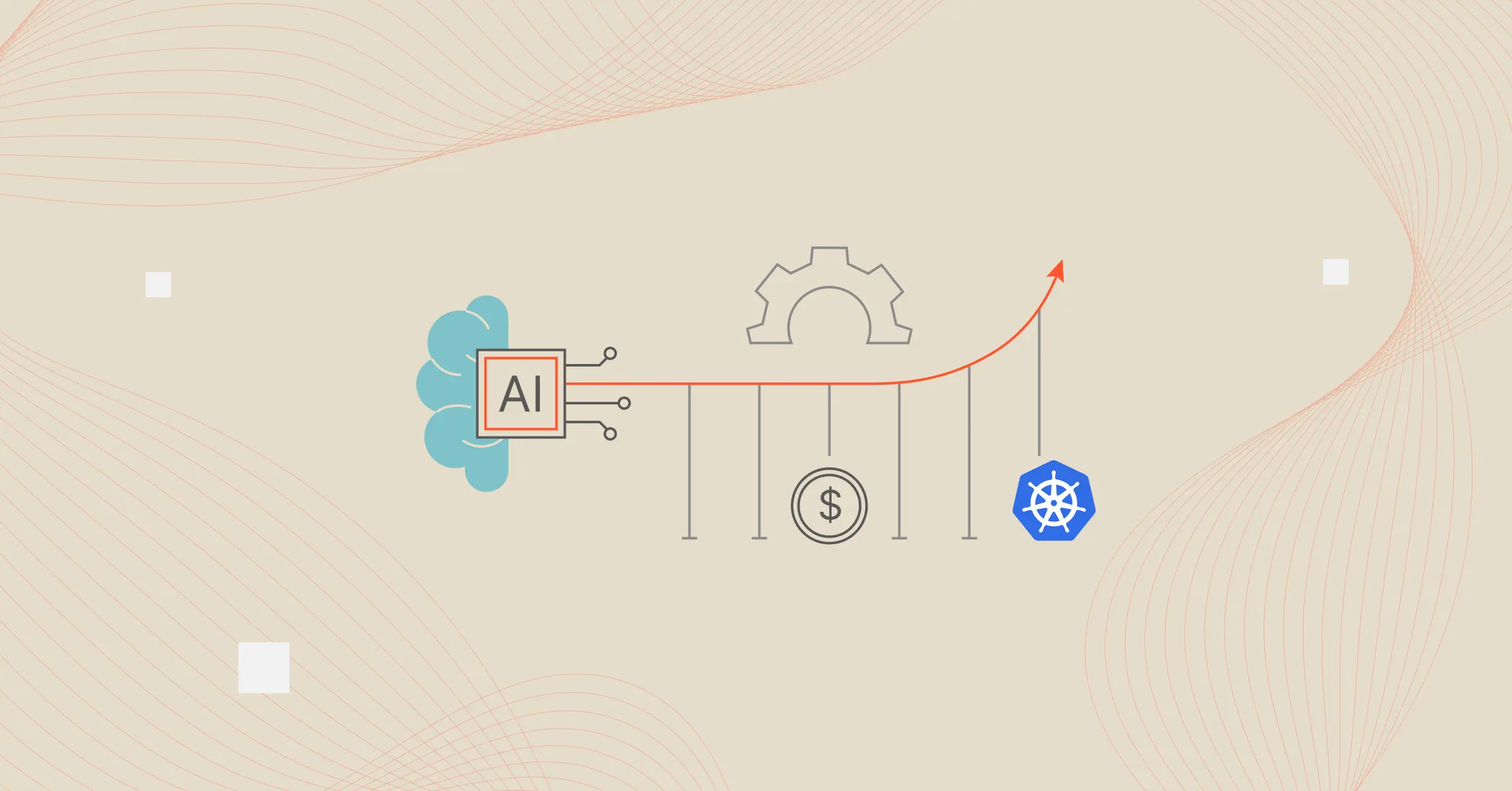While many of us have already heard of Kubernetes, or may even be leveraging it within our technology stacks, it’s still important to remember that the platform is undergoing massive adoption and evolvement. Due to its relative infancy, Kubernetes is ripe to allow for integrating new technologies, like Artificial Intelligence (AI) and Machine Learning (ML).
As an open-source platform, Kubernetes orchestrates containerized applications, ensuring they run efficiently and resiliently. Despite the platform’s power, Kubernetes still faces challenges, particularly in cost management.
Kubernetes’ dynamic and complex nature can lead to unforeseen expenses, making it difficult for organizations to optimize their cloud spending. This is where AI and ML come into play.
By leveraging AI and ML algorithms, businesses can gain deeper insights into their Kubernetes environments, enabling more effective cost control and resource optimization. This introduction to AI’s integration into Kubernetes sets the stage for exploring how it transforms cloud cost management.
The Complexity Of Kubernetes Cost Management
In Kubernetes, resource allocation and usage are not static. They change dynamically, adapting to the needs of the applications they support.
While beneficial for performance and scalability, this fluidity makes predicting and tracking costs a daunting effort. Resources such as computing power, memory, and storage can be scaled up or down rapidly, often resulting in fluctuating costs that are hard to anticipate.
The decentralized and microservice-based architecture of Kubernetes adds another layer of complexity. With numerous pods running different parts of an application, pinpointing which components are driving up costs becomes a challenging endeavor.
Traditional cost management tools, which often rely on more predictable and static usage patterns, are not equipped to handle the intricacies introduced by the platform.
This landscape necessitates adopting more sophisticated and intelligent tools for cost management.
Tools that monitor real-time resource utilization, analyze usage patterns, and provide actionable insights are essential. Such platforms should not only track costs but also offer recommendations for optimization, helping organizations maximize their investment into Kubernetes.
AI And Machine Learning In Kubernetes Cost Management
Navigating the complexities of Kubernetes cost optimization, the integration of AI and ML emerges as a transformative force. These advanced technologies are revolutionizing how costs are managed in Kubernetes environments, offering solutions far beyond the capabilities of traditional tools.
Key Ways AI and ML Are Enhancing Kubernetes Cost Management
- Predictive Analytics – AI algorithms excel in forecasting resource needs by analyzing historical data. This predictive capability is vital for budgeting and resource allocation in fluctuating environments, allowing for more precise predictions of future demands.
- Pattern Recognition – ML algorithms continuously learn from resource utilization data, improving their ability to identify cost-saving opportunities. They detect usage patterns, optimize resource allocation, and prevent overprovisioning and underutilization.
- Real-Time Optimization – AI-driven tools can dynamically adjust resource allocation in real-time, matching the current needs of applications efficiently and cost-effectively. This ensures optimal resource usage without incurring unnecessary expenses.
- Automated Decision Making – By automating complex decision processes, AI reduces the need for manual intervention and minimizes the risk of human error in resource management.
Introducing AI and ML into Kubernetes cost management represents a shift from a reactive to a proactive and predictive approach. These technologies enable organizations to delve deeper into their Kubernetes operations, offering insights that lead to more effective cost control and enhanced resource optimization.
This integration is not merely a trend but a crucial step towards mastering the cost management challenges posed by Kubernetes, marking a significant advancement in cloud computing operations.
Best Practices For Implementing AI/ML In Kubernetes Operations
With the growth of the sector, best practices must be defined to ensure that businesses are getting the most out of the technology. These practices ensure that organizations can fully leverage AI and ML to enhance their Kubernetes operations within the realm of cost optimization.
Key best practices for implementation
- Start With Clear Objectives – Define specific goals for AI and ML integration, such as reducing costs, improving resource utilization, or automating scaling decisions. Clear objectives guide the implementation process and measure success.
- Ensure Data Quality – High-quality, accurate data is essential for training ML models. Ensure that the data collected from Kubernetes environments is comprehensive and clean for effective learning and analysis.
- Test And Iterate – Implement AI solutions in a controlled environment first. Monitor performance, gather feedback, and iteratively improve the system before full-scale deployment.
These integrations address the cost management complexities and open the door for innovation and efficiency in cloud environments. Embracing AI and ML is a strategic move towards future-proofing Kubernetes and staying ahead of the curve.
CloudZero: Integrating AI and ML into Kubernetes Cost Optimization
Defining best practices can sometimes create an overwhelming situation. Being confronted with the possibility that we’re leveraging outdated principles, hosting misconfigurations, and not getting the most out of technology because of our own limitations can create a frustrating situation.
Thankfully, platforms like CloudZero can go a long way toward easing our fears and ensuring that technologies like AI and ML are natively being leveraged without worrying about the revolving best practices inherent with any new technology.
Key features of CloudZero in Kubernetes cost optimization
- AI-Powered Cost Analysis – CloudZero employs AI algorithms to analyze cost data deeply. It identifies trends and anomalies in Kubernetes spending, helping organizations understand where and why they incur costs.
- Real-Time Cost Monitoring – The platform provides real-time visibility into Kubernetes expenses. This continuous monitoring allows for quick identification and rectification of costly inefficiencies.
- Predictive Budgeting – Utilizing ML and predictive analytics, CloudZero offers forecasts on future spending based on current usage patterns. This feature aids in proactive budget planning and helps avoid unexpected cost overruns.
- Resource Optimization Recommendations – The platform uses AI to suggest optimization in resource allocation. These recommendations help avoid overprovisioning resources, ensuring cost efficiency without compromising performance.
These are only some of the benefits that CloudZero provides. The platform’s integration of AI and ML marks a crucial advancement in cloud computing operations, setting a new standard within the industry, guiding organizations towards smarter, more informed cost management strategies.
See how CloudZero can help your organization’s bottom line by  !
!







